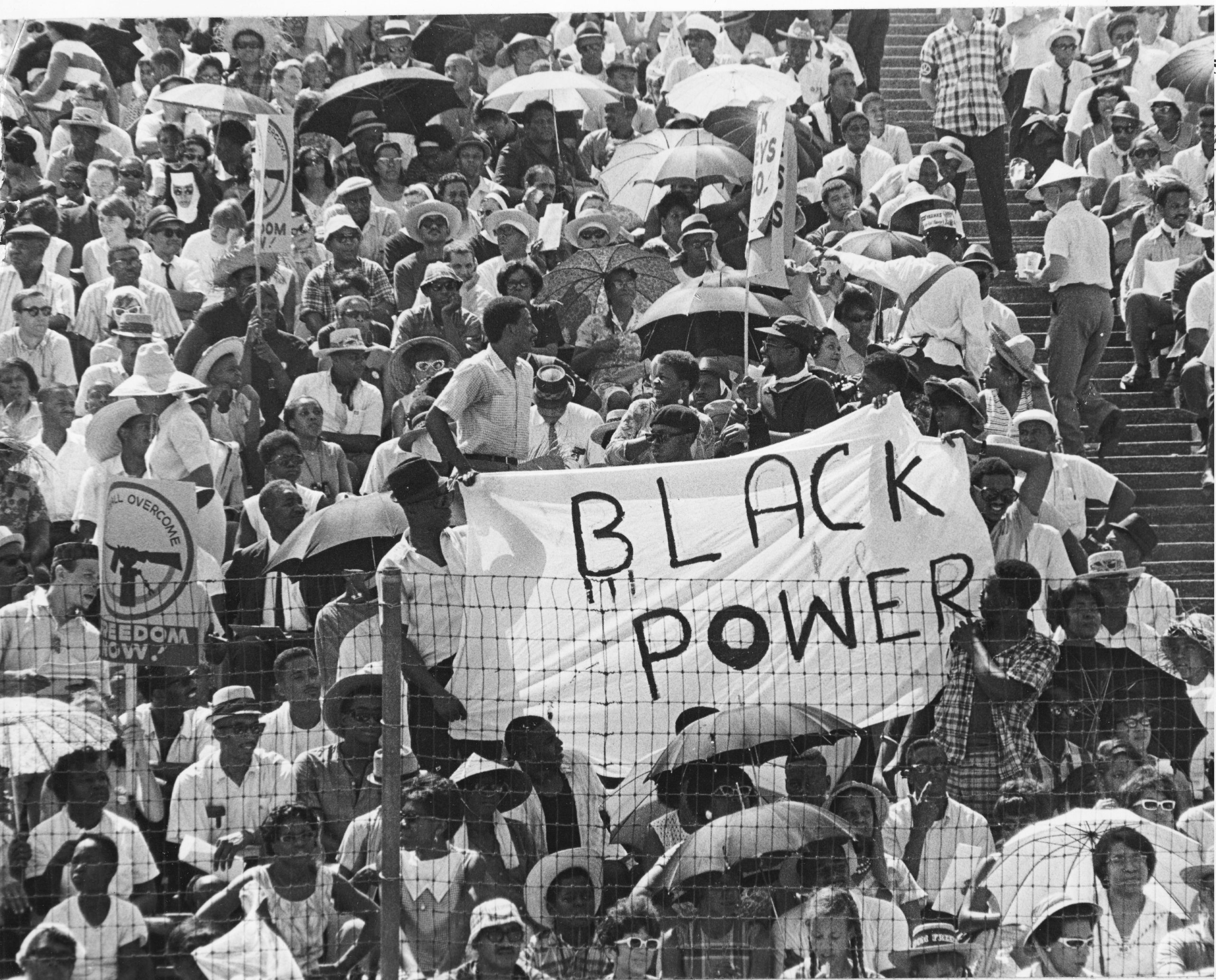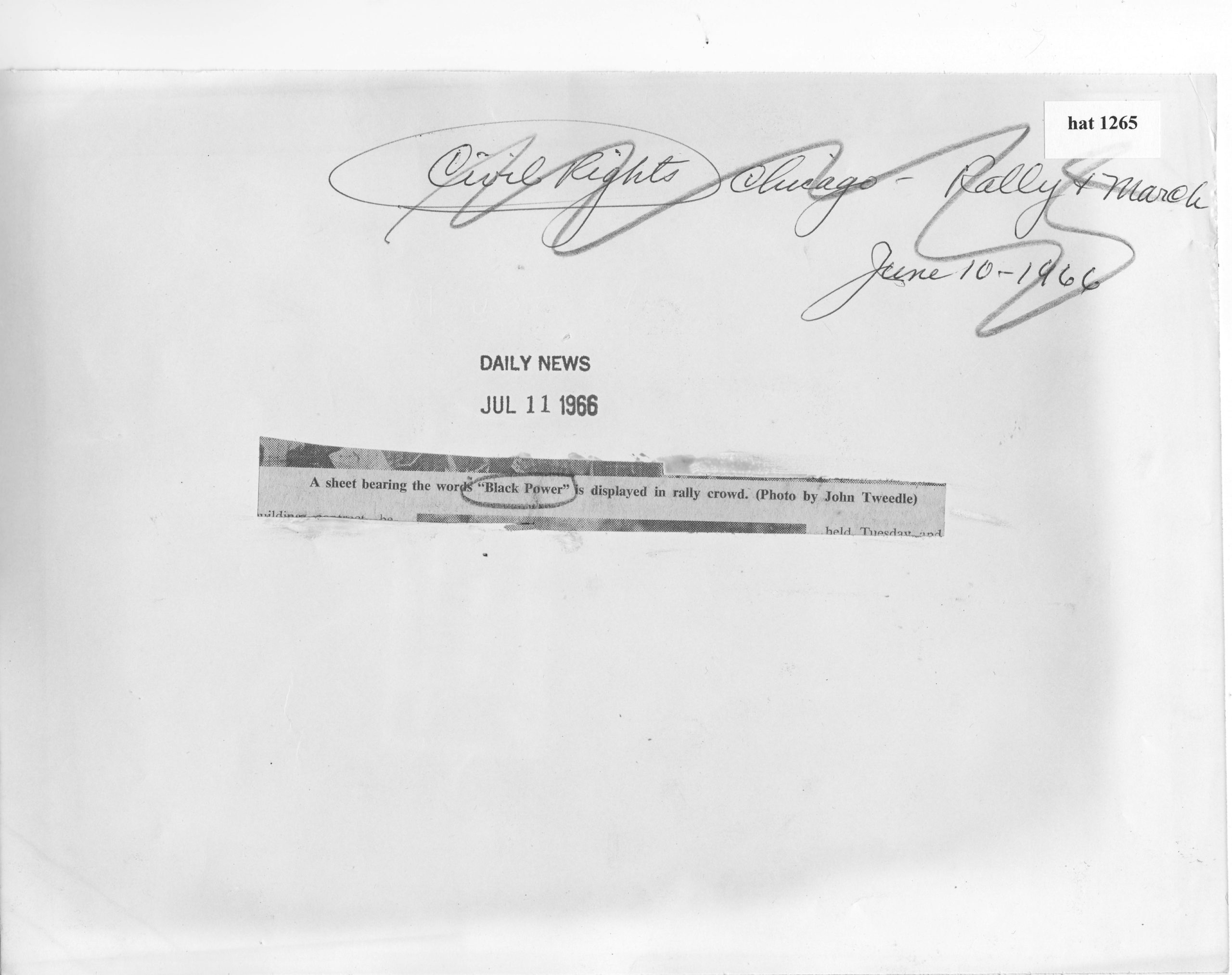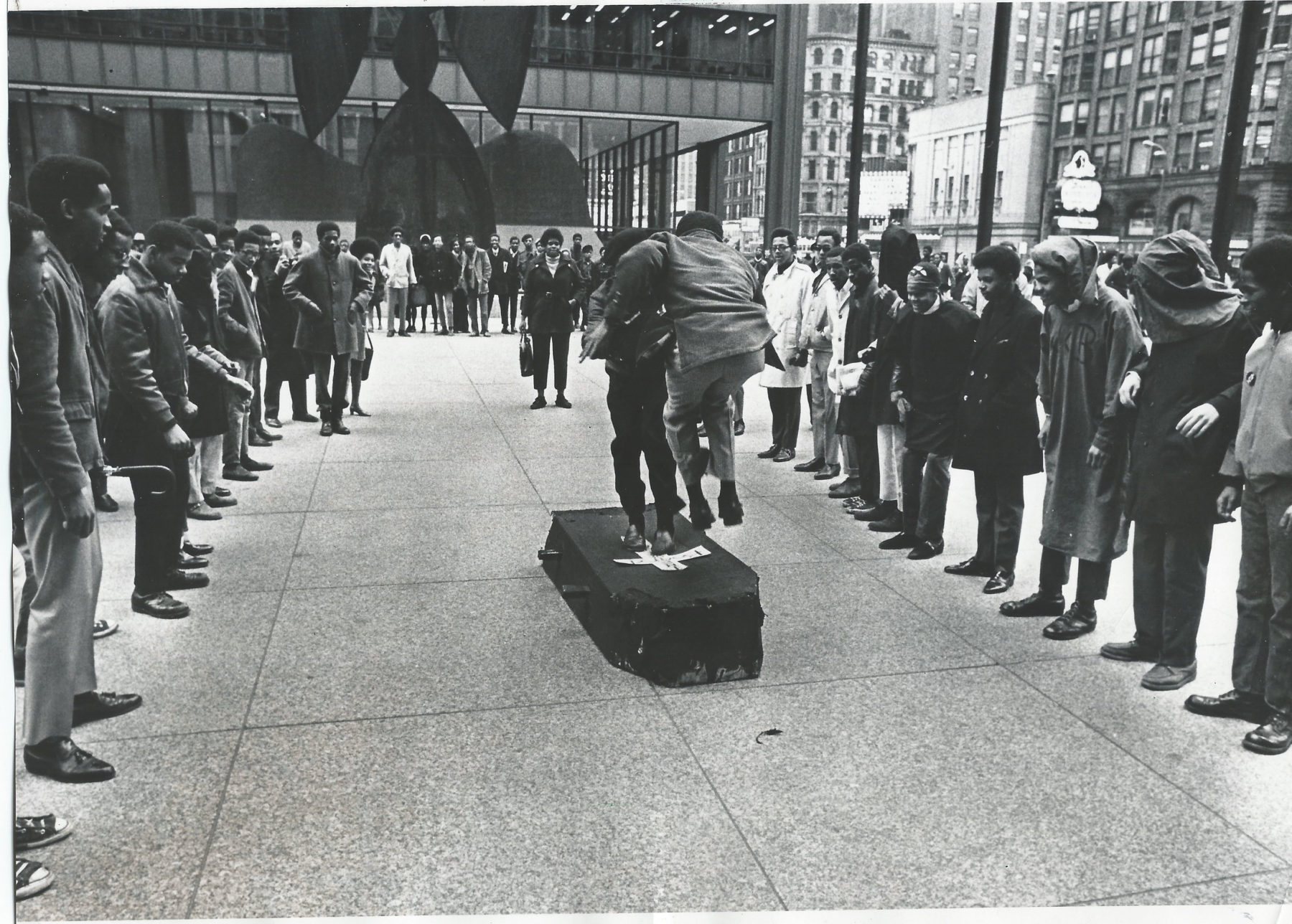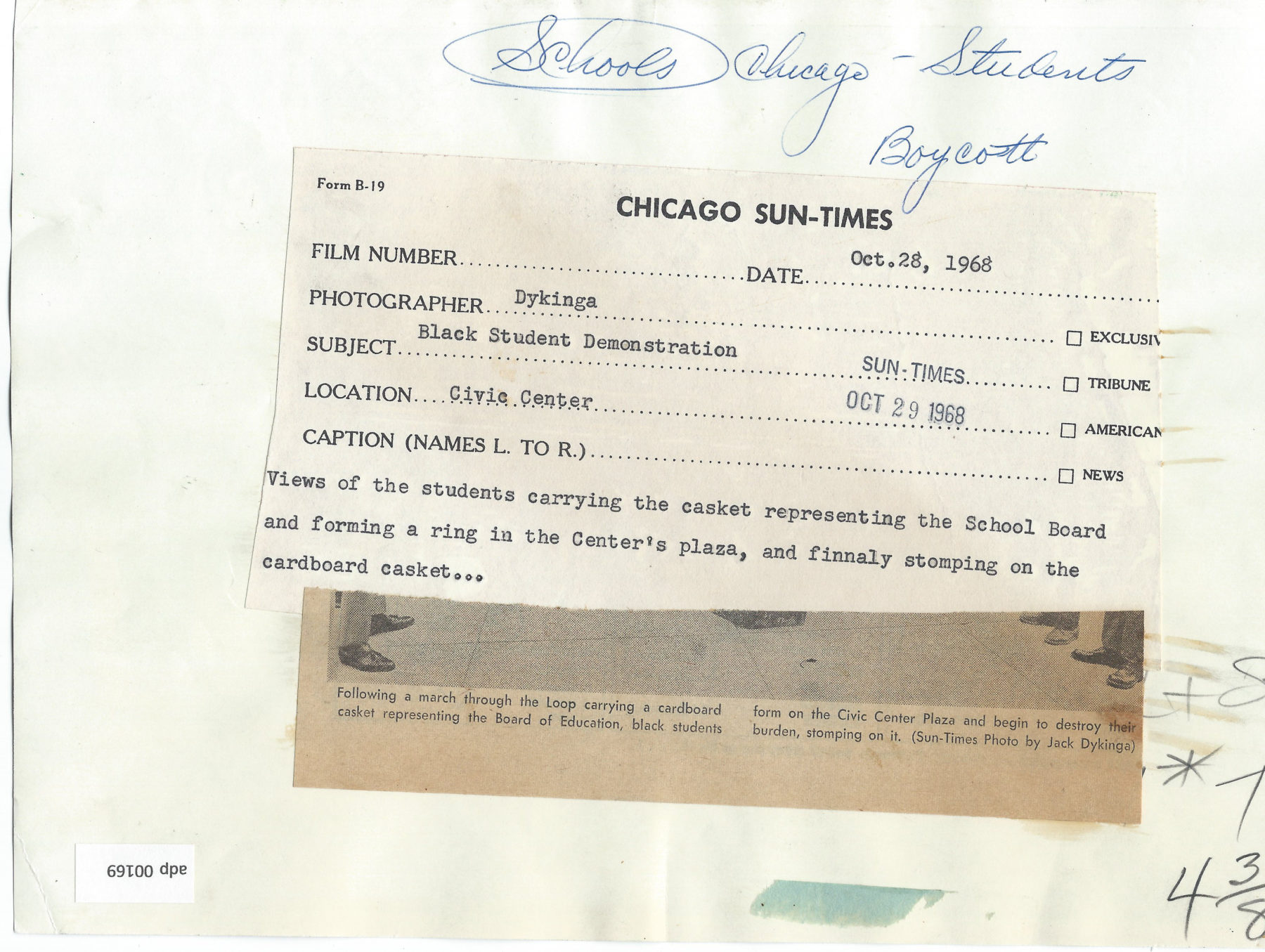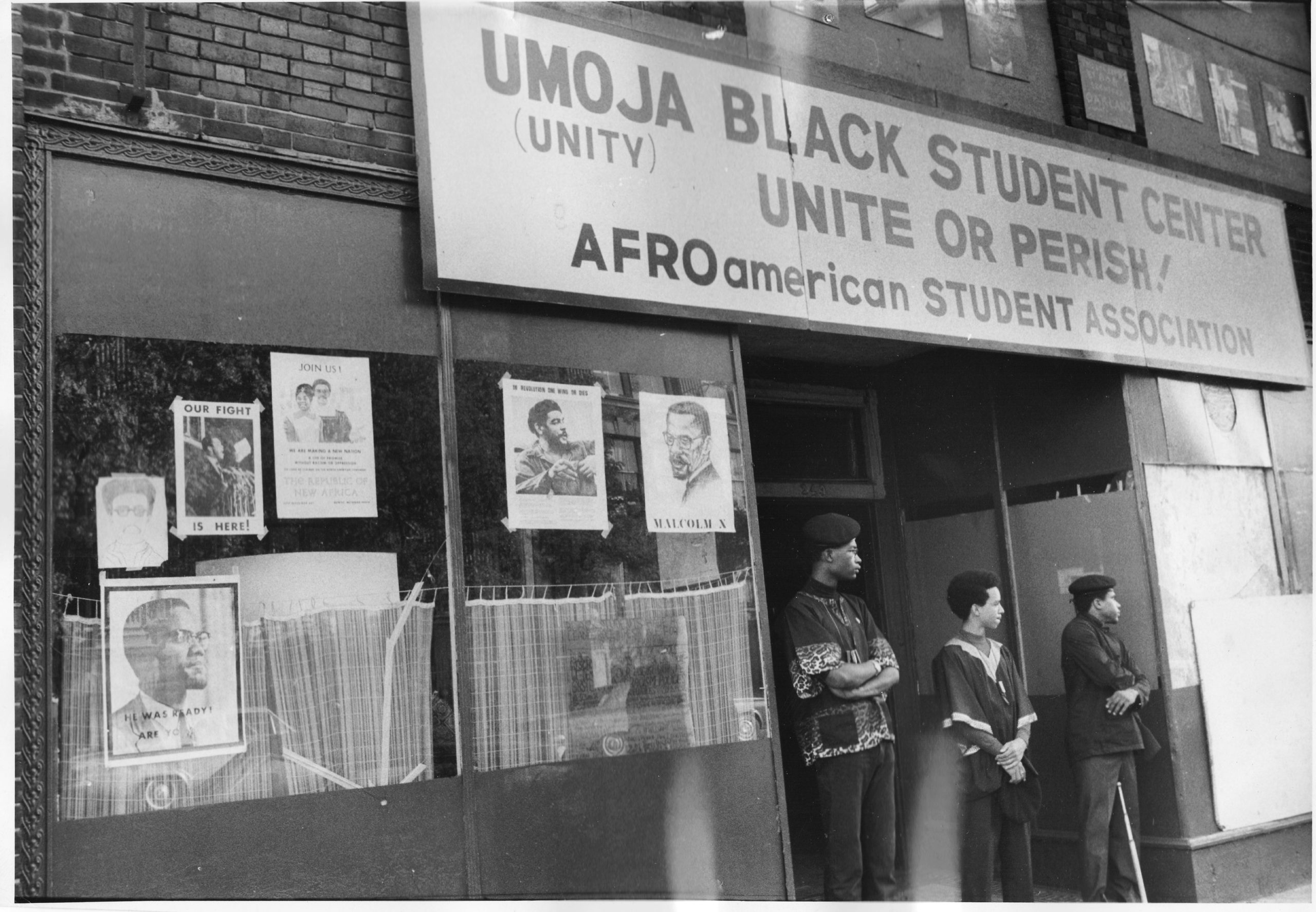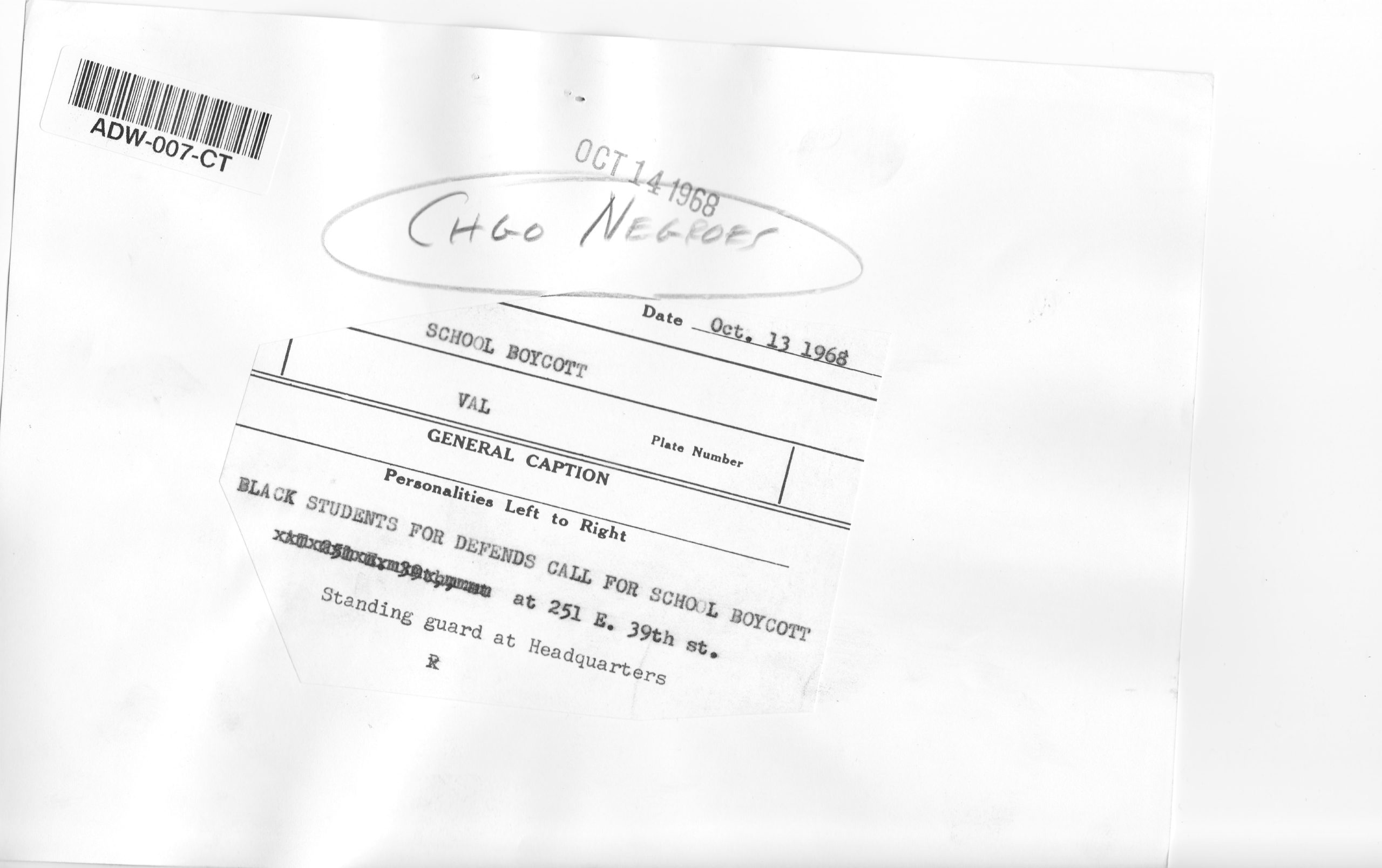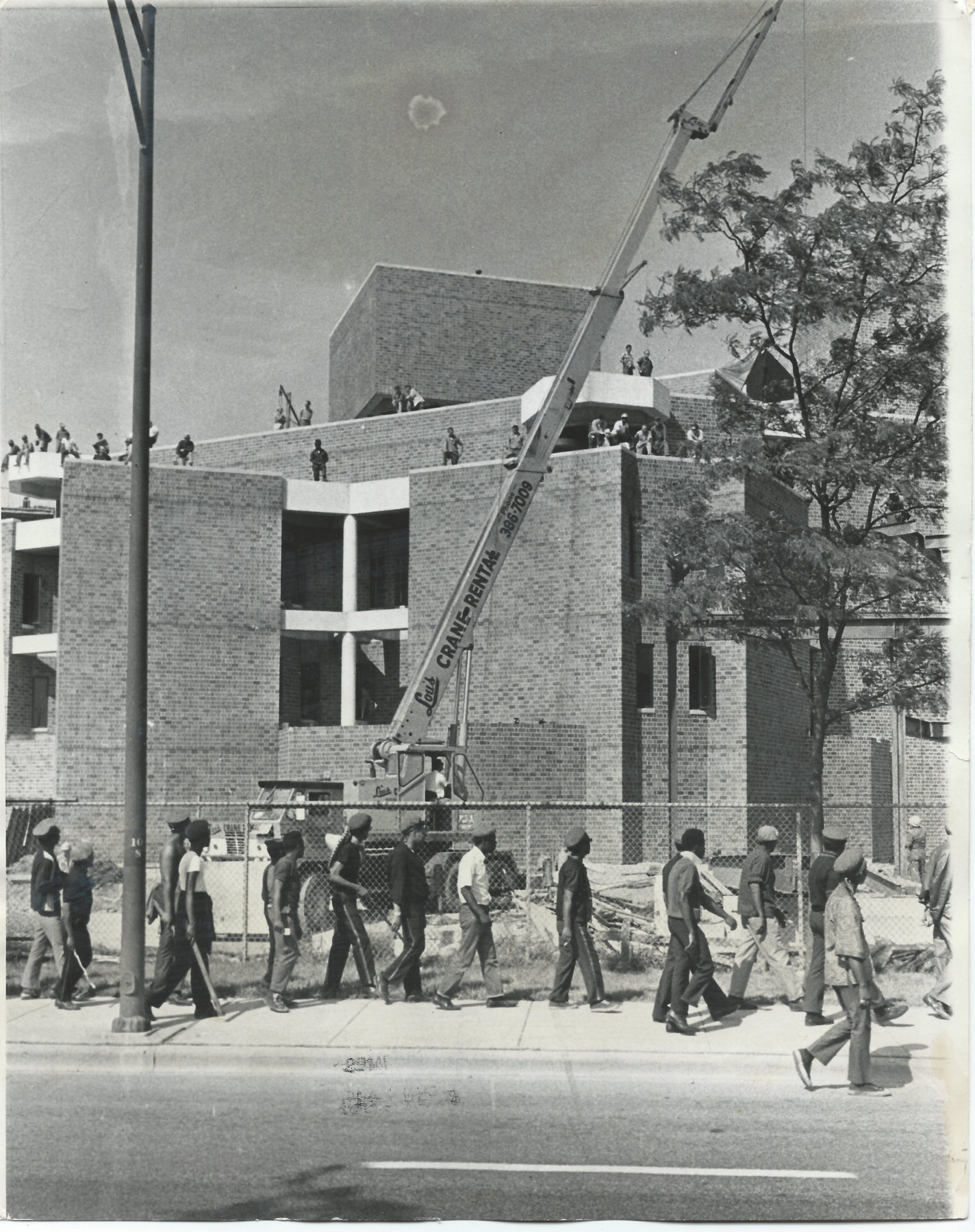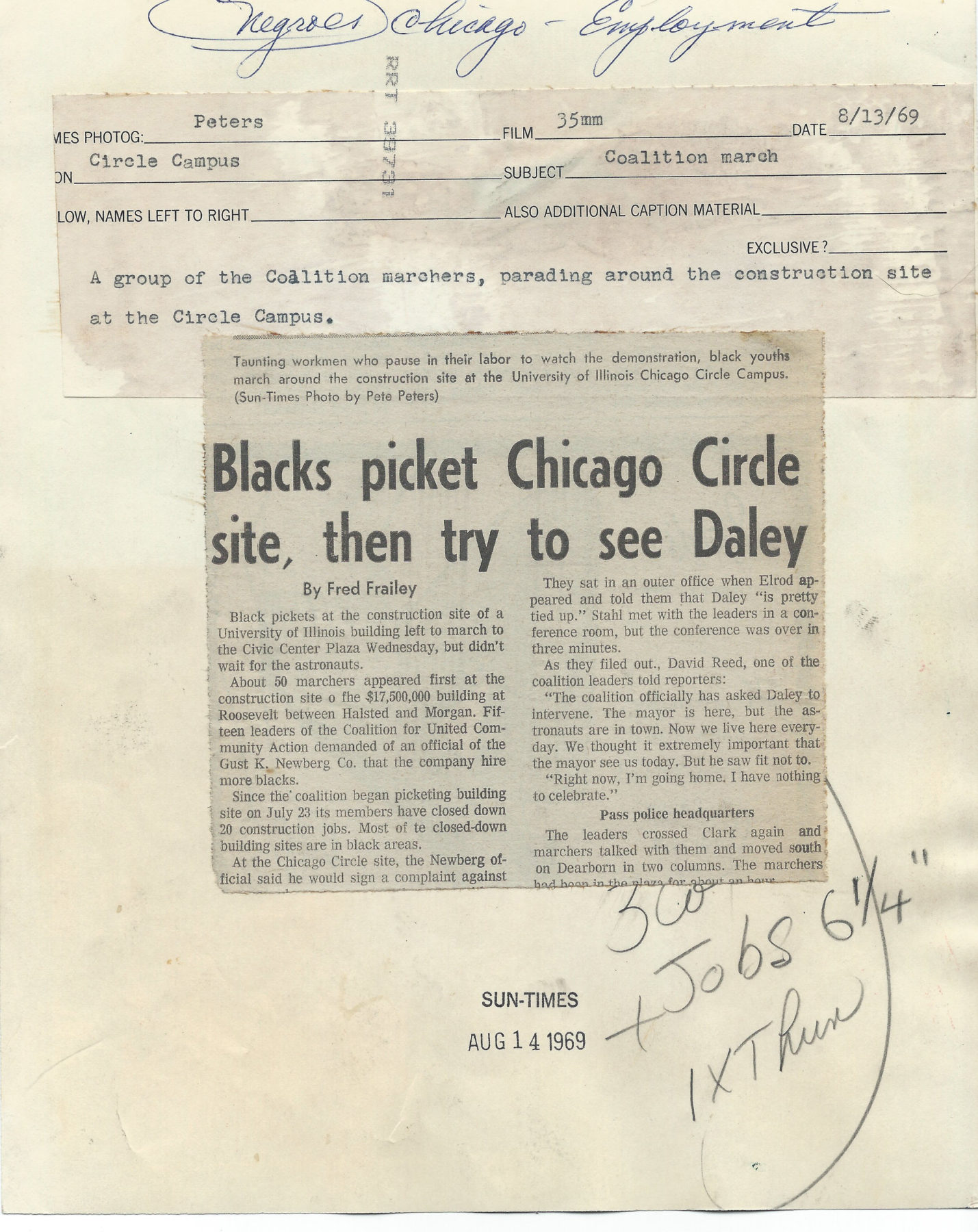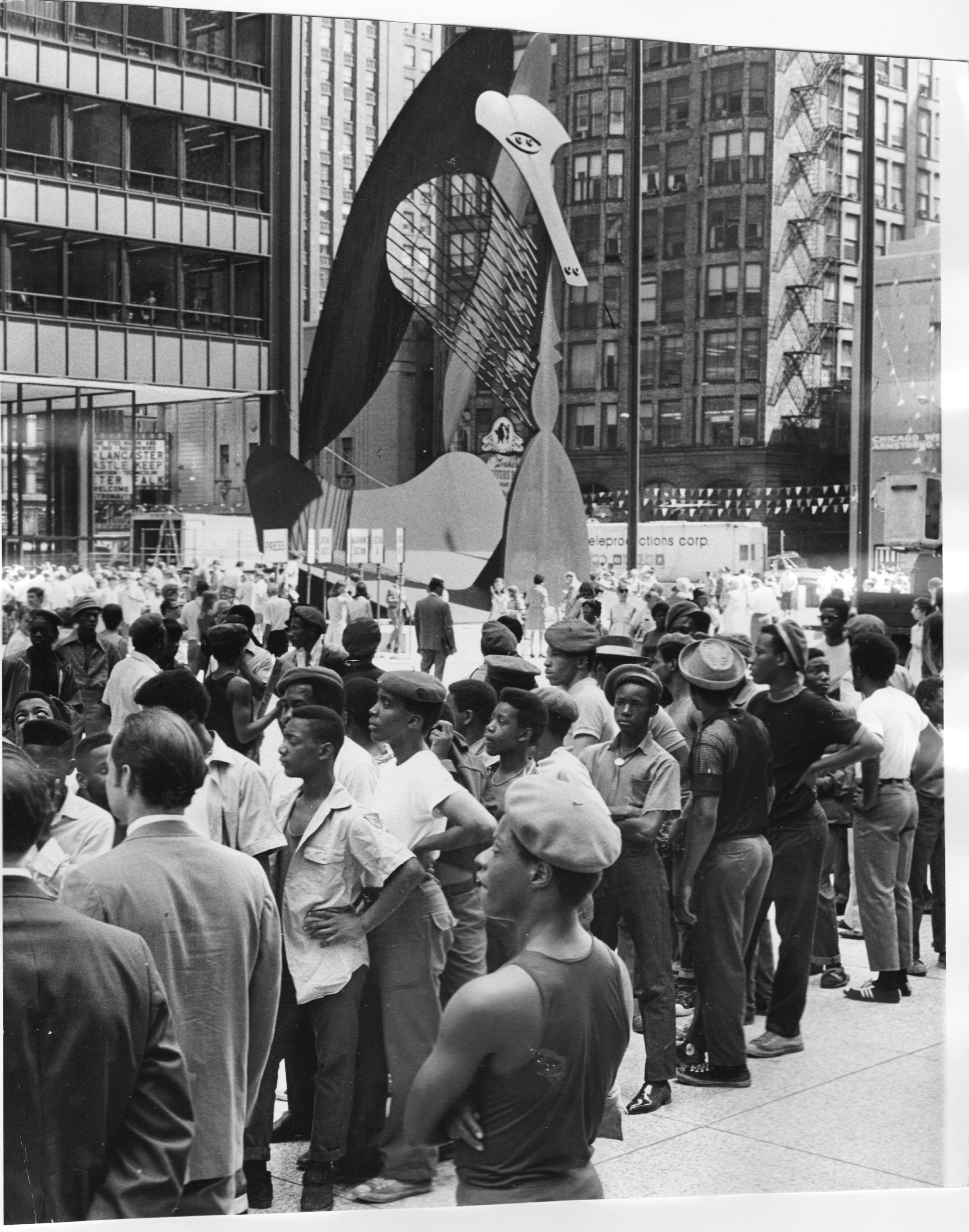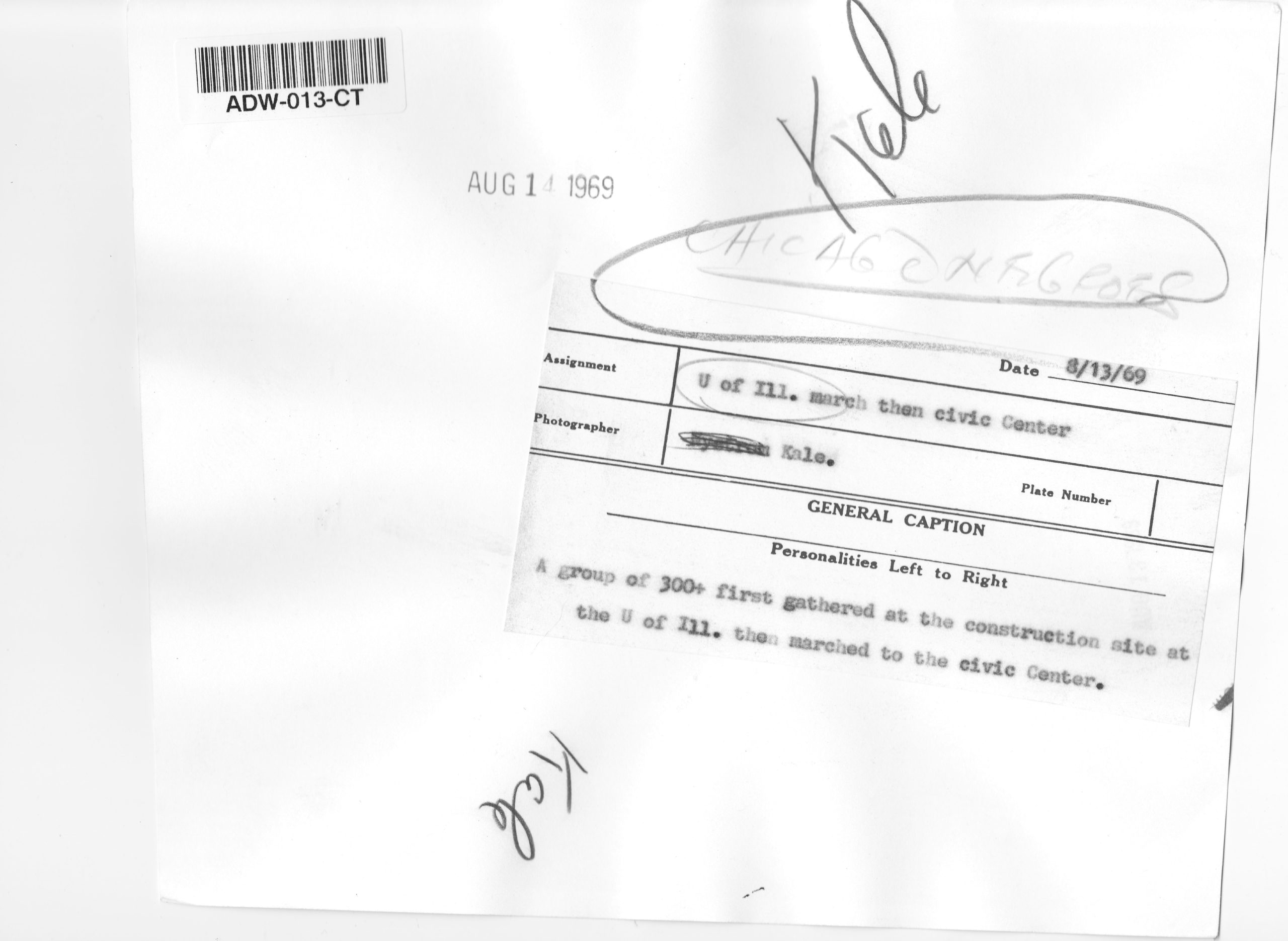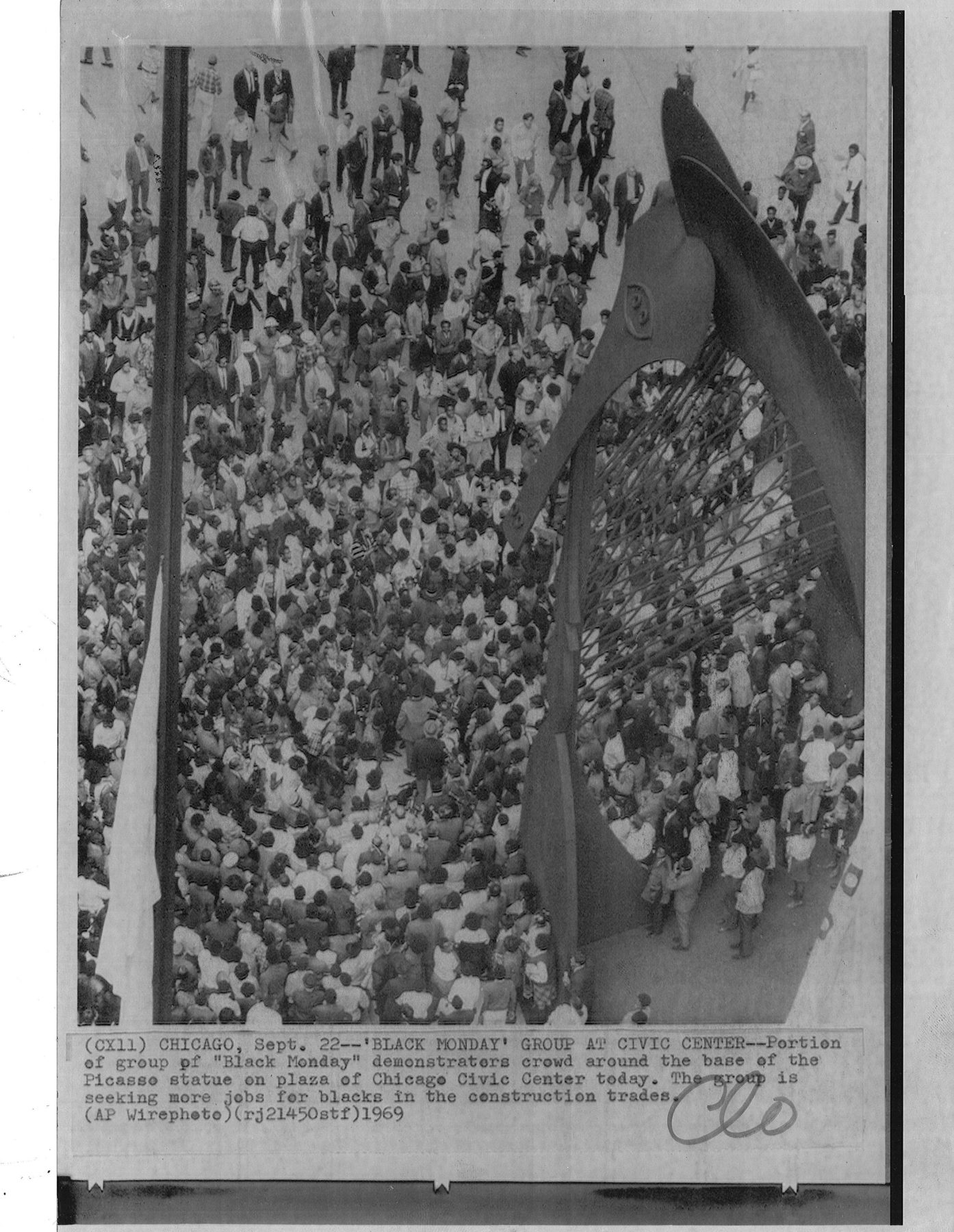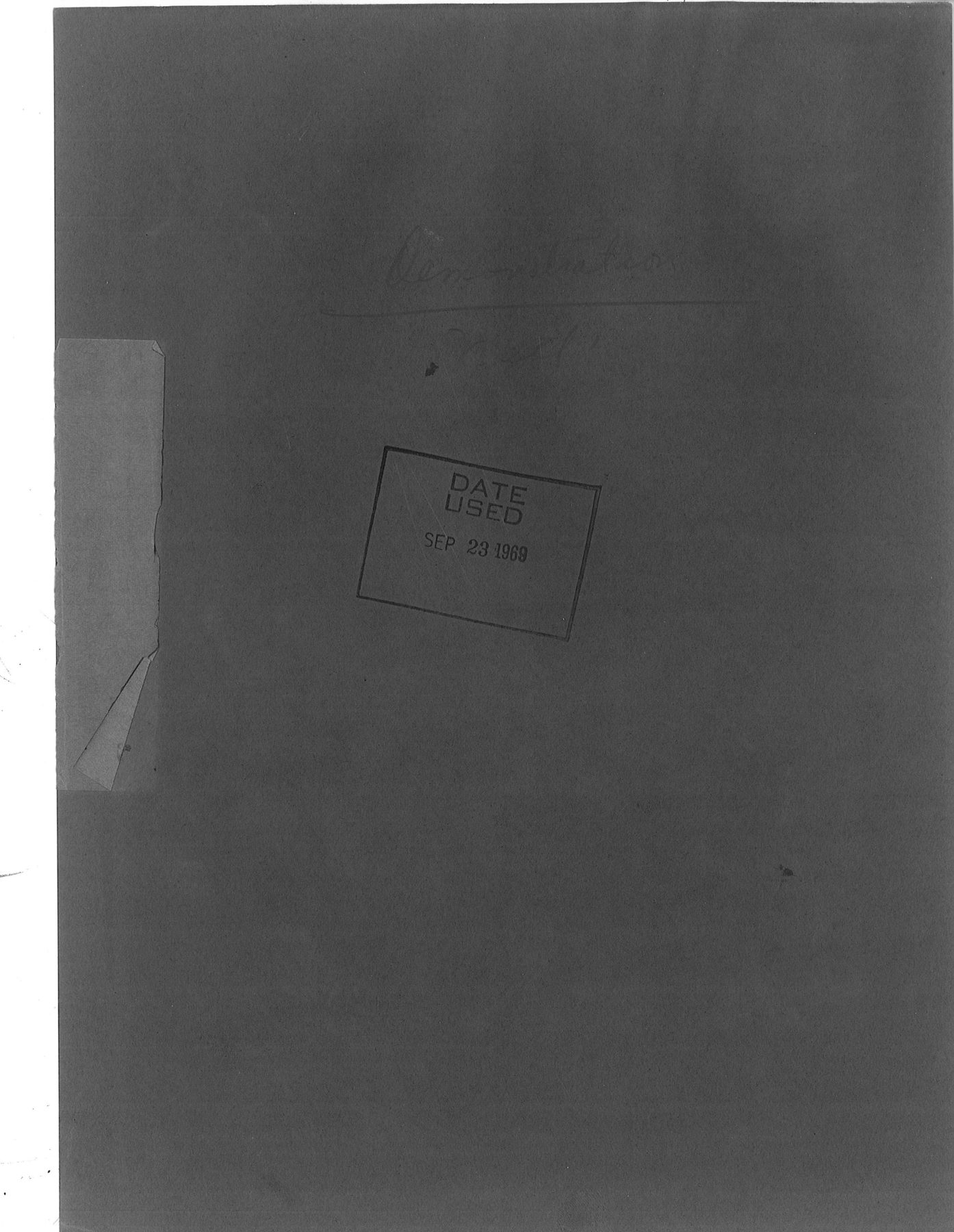5. Black Power and Direct Action
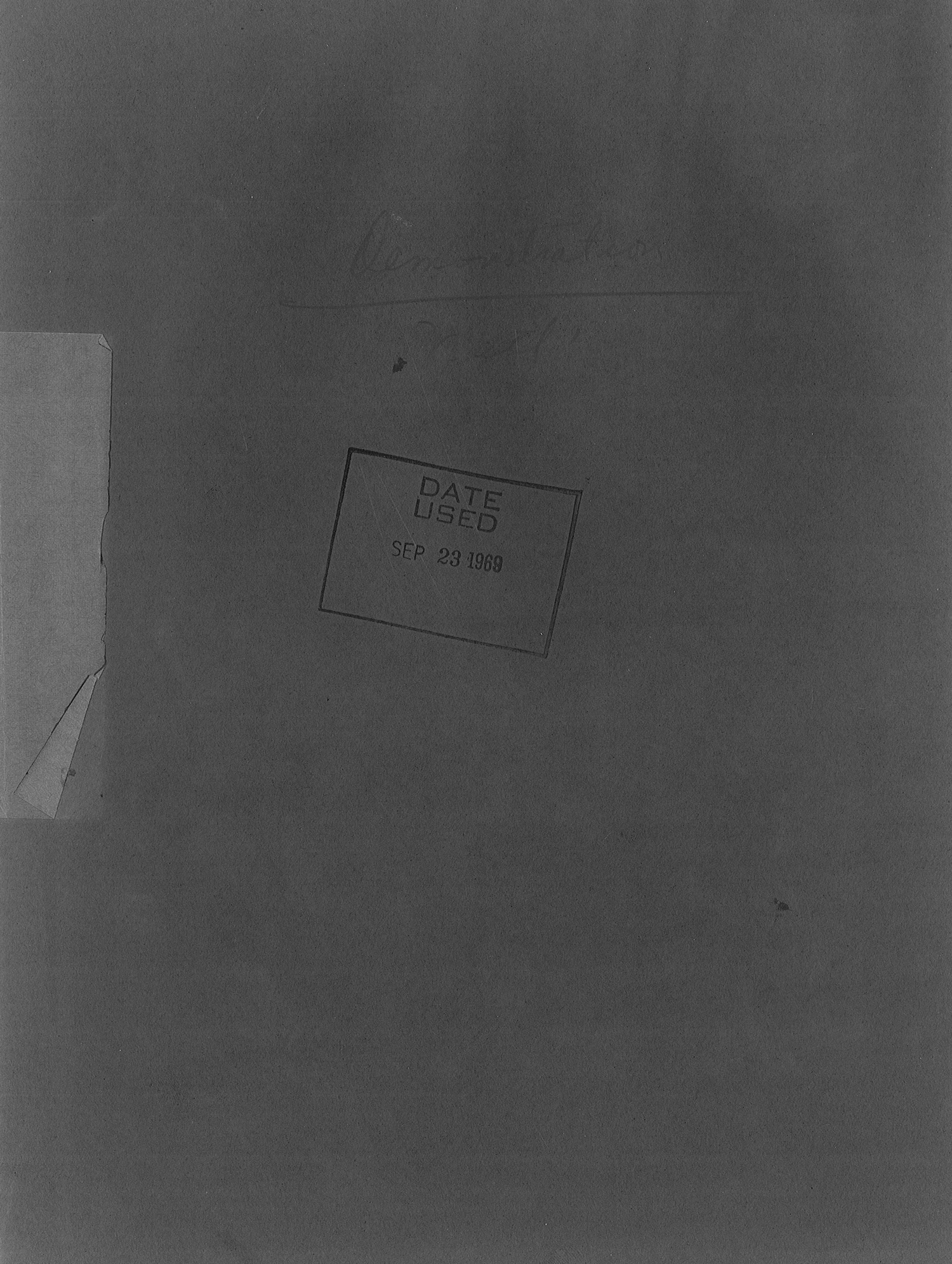
Chicago was a hotbed of Black activism in the 1960s as local and national movements pushed for equality in housing, employment, and education. In 1966, Dr. Martin Luther King, Jr. came to Chicago to fight housing segregation, which was enforced in the city by groups of white homeowners (rather than by state law as in the Southern U.S.). King held a rally with vast crowds at the Soldier Field stadium, close to downtown, and was met with signs bearing the phrase “Black Power,” which represented a more radical activist alternative to King’s integrationist approach (5.1). Black Power implied a drive to consolidate power (economic, political, and cultural) within the Black community and entailed a shift of focus away from seeking the approval of whites or integration with them.
Black student activists organized in large numbers in the late 1960s. Many college students joined the Black Panther Party and other activist groups. High school students also independently organized mass school boycotts to protest inequities in education and racist curricula. Student boycotters held meetings at Phil Cohran’s famed Affro-Arts Theater, where OBAC also held meetings and performances. (The building was to become the El Rukn headquarters, shown under siege by police in 6.5.) Nearby in the Bronzeville neighborhood was the Umoja Black Student Center, a storefront space where a mural composed of works by photographer Bob Crawford graced the façade (5.3). In one spectacular action, students marched on Civic Center Plaza and lined up in front of Chicago’s famous public sculpture by Picasso (known only as “the Picasso”), staging the theatrical destruction of a casket labeled “Board of Education” (5.2).
Along with housing and education, employment was at the top of activist agendas. Gangs also joined together—creating coalitions across gang lines—to push for better employment prospects for their members. In 1969 gang members protested the lack of opportunities for young Black men in the building trades, and in particular the failure of construction projects on the new University of Illinois campus to hire Black workers. A coalition of young men marched to Civic Center Plaza, wearing their individual gang uniforms (5.4, 5.5, 5.6). Eventually, the protesters won concessions, forcing the unions to open their ranks to Black workers.
Photographer: John Tweedle
Chicago Daily News
6/10/66, published 6/11/66
Photographer: Jack Dykinga
Chicago Sun-Times
10/28/68, published 10/29/68
Photographer: Val Mazzenga
Chicago Tribune
10/13/68, stamped 10/14/68
Photographer: Pete Peters
Chicago Sun-Times
8/13/69, published 8/14/69
Photographer: Walter Kale
Chicago Tribune
8/13/69, published 8.14.69
AP Wire Photo
9/22/69
